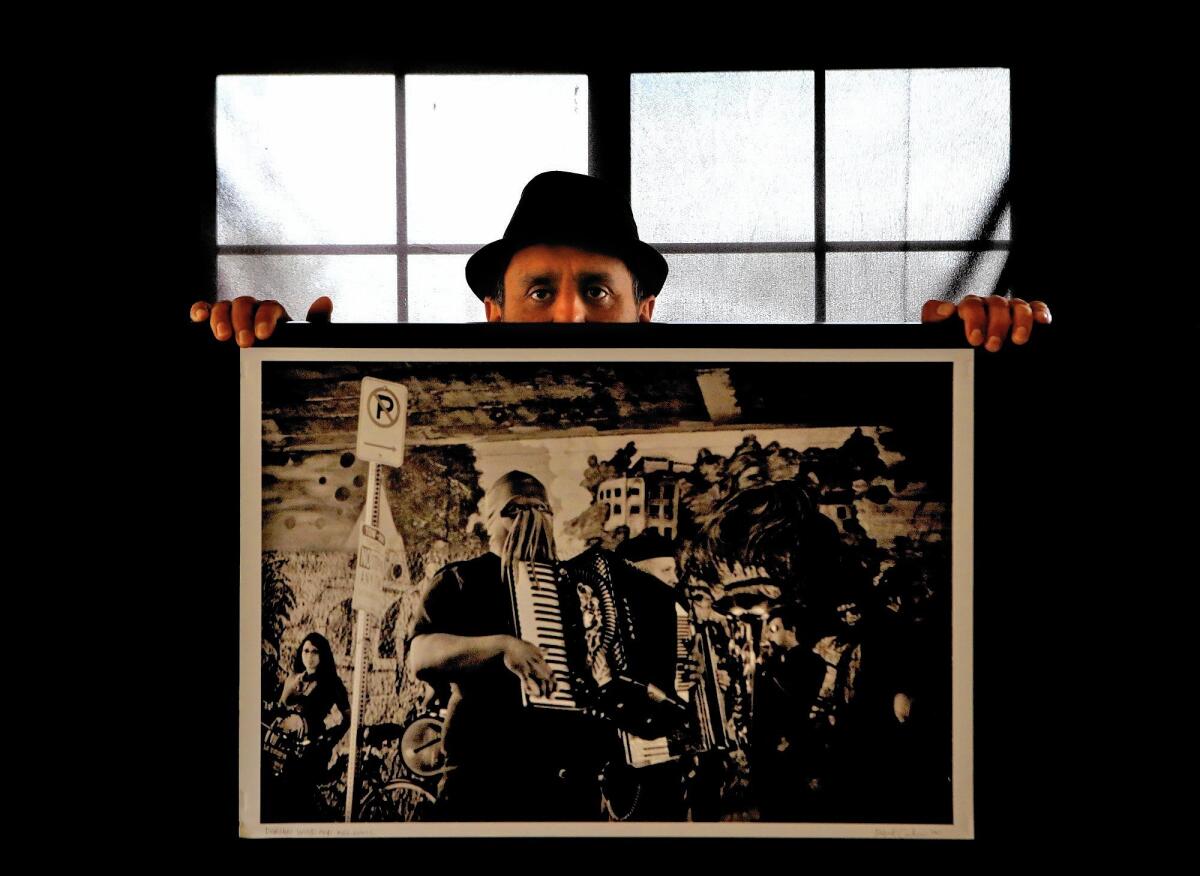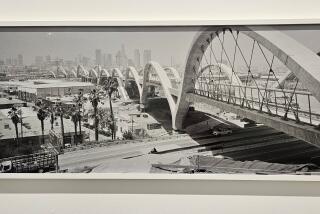Focusing on photography becomes a labor of love

Some people travel through life on straight, clearly marked paths.
Rafael Cardenas has zigged and zagged.
Born in Mexico and raised in East L.A., he has tried his hand at many kinds of labor in the course of his 43 years.
In the summertime, as a boy, he worked in the fields, pulling onions. Later on, he was a bouncer and a paralegal. He built websites. He did electrical wiring.
It was just to earn money, never what grabbed him.
So Cardenas found creative outlets. He acted. He rapped. He filled notebooks with portraits of strangers, stories, random thoughts, haiku.
At the end of 2009, he left a job managing a security crew and vowed to never again, day in, day out, work for someone else.
With sudden time on his hands, he set out on a mission: to develop the skills of a real photographer.
He had always loved taking pictures, even if it often meant borrowing a friend’s camera. So he bought himself a used digital one and went online — searching blogs and watching video tutorials — to teach himself how to control such variables as depth of field and exposure.
Then Cardenas took to the streets to try out and build upon what he’d gleaned.
To fully commit to this self-schooling, he challenged himself to post a new photo each day of 2010. On any given day, to come up with one good one, he took hundreds.
On a bike, on foot, on buses and trains, in his gray pickup truck, he wandered the city, experimenting.
Sometimes he’d see something interesting and not even lift the camera to frame it. He’d literally shoot from the hip, his Canon dangling from its strap, and wait to see if he’d gotten anything at all — and if he did, try to figure out how to do it again the next time.
He didn’t think in themes. He simply stopped for what caught his eye. A man walking down the front steps of City Hall, looking as if he carried the weight of all L.A. on his shoulders. The window of a store with two signs: Open and Closed.
From inside his truck, in a downpour, he captured raindrops on his window as a cyclist passed under a traffic light.
While leaving a Martin Luther King Day parade, he spotted a vintage yellow Chevy Monte Carlo with yellow starfish rims, stuck in traffic, hugging the road’s yellow center stripes. On the other side of the street was the yellow sign of a furniture store. The road was wet. The yellow was everywhere, so bright. He caught the perfect moment when the woman behind the wheel turned her head his way and smiled.
On Valentine’s Day, he saw a young couple sitting on some steps, leaning into each other. He clicked when the girl kissed the boy’s cheek, cradling his chin with one hand.
People began to take notice of his work online and followed his progress. In East L.A., they recognized him and would call out. At first, the attention took him by surprise.
Cardenas viewed himself as a beginner, on a long apprenticeship. He didn’t promote himself, and began handing out business cards only so that those he photographed could look for the images online.
Soon he started getting hired to take photos and asked to exhibit in shows.
Over time, he realized that his work was adding up to something, that he was chronicling a fast-changing city, keeping a record of moments that otherwise would disappear forever.
This year, to mark the fifth anniversary of his plunge into photography, Cardenas launched a crowdfunding campaign on Kickstarter to self-publish a limited-edition coffee-table photo book. In a month, he raised more than his $10,000 goal.
Now, some people look at his work and ask where he went to art school.
“I tell them, ‘I studied at YouTube. I got my MFA at Google,’” he says.
Cardenas recently moved into half of a small Boyle Heights bungalow. He’s converted a closet into a tiny office, just big enough for him to plunk down his laptop and edit his work.
His father groomed horses at racetracks. His mother worked in factories. Cardenas’ life is a modest one, but it’s all his own.
From his kitchen window, he can see the downtown skyline. In the evening, he opens his windows to let fresh breezes sweep through.
In his head are new projects, new ways he’ll push himself, new zigs and zags on his own terms.
Follow City Beat @latimescitybeat on Twitter and at Los Angeles Times City Beat on Facebook.
More to Read
Start your day right
Sign up for Essential California for news, features and recommendations from the L.A. Times and beyond in your inbox six days a week.
You may occasionally receive promotional content from the Los Angeles Times.







